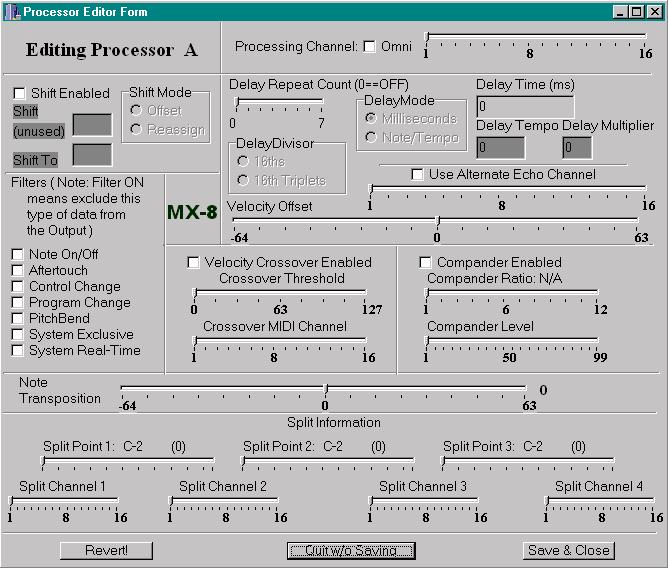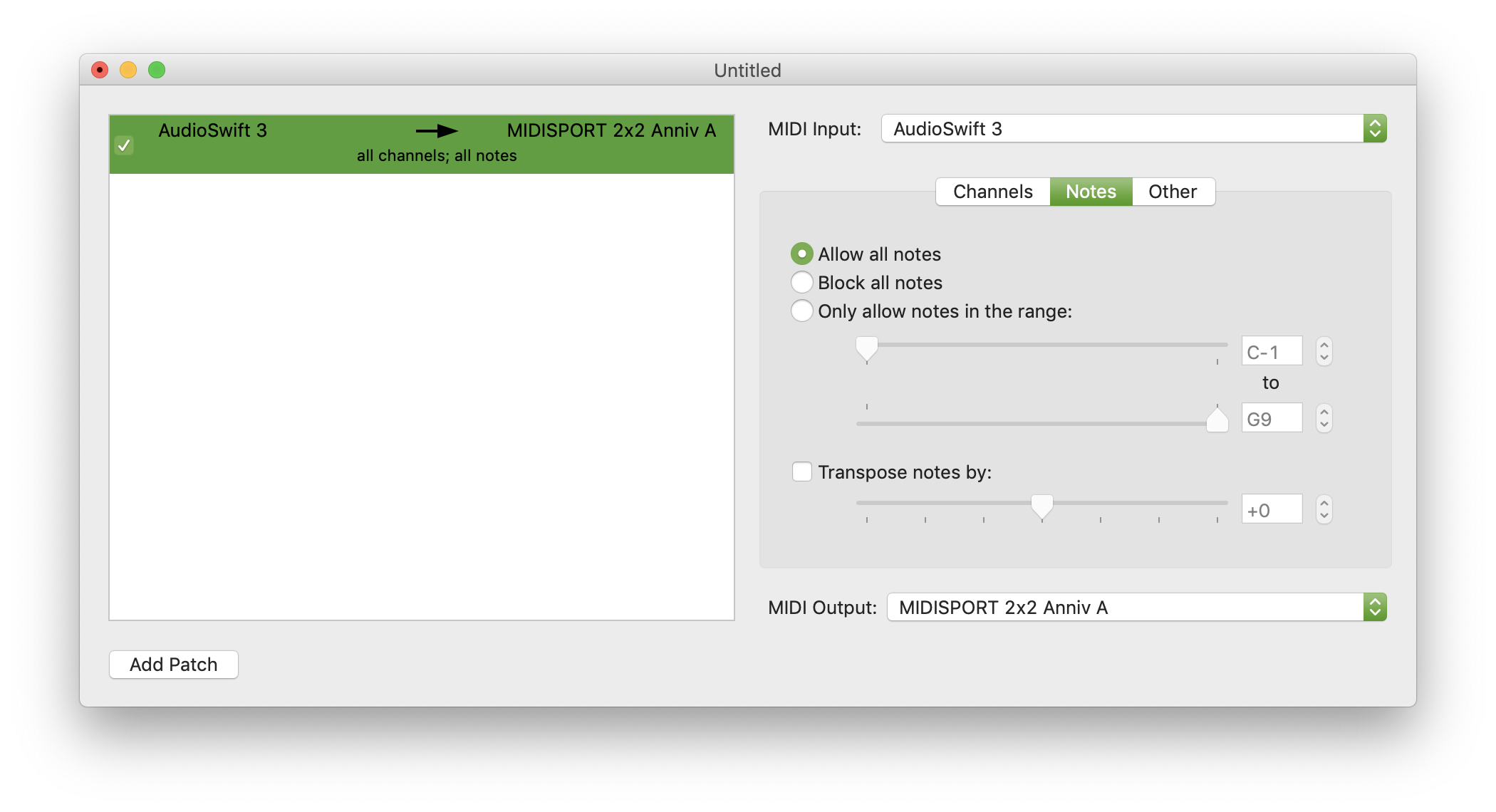
MIDI PATCHBAY WINDOWS SERIAL
Cables for serial data connection from the computer to the Studio 128X are included, and there's a 'thru' connection so that you can still use the serial port (to send to a printer, for instance) when you're not playing with MIDI. When used with a sequencer, the Studio 128X becomes a Computer‑to‑MIDI Interface.
MIDI PATCHBAY WINDOWS WINDOWS
Editing of the user programs can only be done with a Windows or MacOS computer, but they can be used from the 128X alone once they have been stored in it. You can store eight of your own routing programs inside, and three utility programs are permanently stored inside, along with five SMPTE striping programs. It's possible to merge two or more inputs together, or alternatively to drive several outputs from one input. The Studio 128X allows you to route any MIDI input port to any MIDI output port, with channel‑changing and filtering applied along the way. The routing program is shown as a cross‑point matrix in the control window. Will we see a similar 128XTC version in the future for anyone who needs these extra sync functions?) Routing & Interface

Mike Collins reviewed the 64XTC in the April 1998 issue of SOS. (For more sophisticated synchronisation, the four‑port Studio 64XTC provides a much wider range of additional sync features like ADAT and other digital audio compatibility. You also get straightforward sync'ing to timecode on tape. What a patchbay does is let you hook all of that sound‑producing power together in various combinations, whilst the MIDI interface lets you drive it all from a computer sequencer. Using an eight‑port interface and patchbay like the 128X, however, should give you access to more than enough sonic armoury to cope with all but the most demanding of applications.

Whereas 128 channels would have seemed like complete overkill ten years ago, today's multitimbral expanders can take up alarming numbers of MIDI channels. An eight‑port version, therefore, can cope with 128 individual MIDI channels or multitimbral parts - which explains the Studio 128X's name. Welcome to the big league.Įach port on a multi‑port MIDI interface/patchbay can cope with 16 separate MIDI channels. Having an extra four MIDI ports may not seem all that significant, but it says a lot about the user's studio: four ports might be described as 'compact', but eight ports is definitely 'serious'.

Opcode's Studio 128X is the "twice‑as‑big" (but in the same size box) elder sibling of the Studio 64X MIDI Patchbay and Interface that I looked at in the May 1997 issue of SOS, and has eight MIDI ports instead of the 64X's four. Martin Russ checks out an eight‑port patchbay/interface from Opcode. 128 MIDI channels would have seemed like complete overkill ten years ago, but today's multitimbral voice modules can use them up at an alarming rate.


 0 kommentar(er)
0 kommentar(er)
